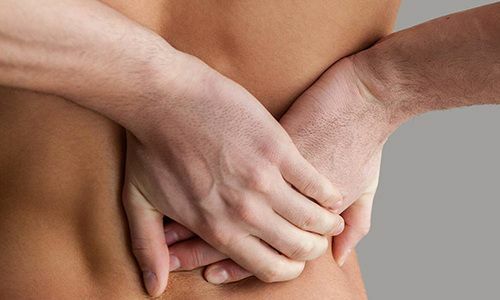Polyps in the bladder in men are the result of some pathological process. Patients who have a neoplasm, in many cases, do not have pronounced external symptoms. Such pathology is revealed during preventive medical examination. If the built-up edge is formed on the sphincter of the bladder, complications can arise. In this case, the patient will have a number of certain complaints. Many people are not serious about this diagnosis. This can lead to oncology. The adolescents tend to degenerate, which leads to the development of cancer. In this case, the therapy will be significantly different.

Characteristics of neoplasm
Polyps often appear on the walls of the bladder. This is due to the pathological proliferation of tissues. The mucous membrane of the bladder has a definite structure. If there is a strong change in metabolic processes, the cells of the mucous membrane begin to actively divide. In this case, the focal appearance of polyps is observed. In some cases, their deep occurrence in the walls of the bladder is noted. A large number of blood vessels fit the walls. When the shell of such a polyp ruptures, the patient experiences slight bleeding.
The pathology itself is not harmful. Problems arise when it is incorrectly localized. If the patient has large polyps on the lower part of the bladder, there may be problems with urination. Also this arrangement causes strong painful sensations. In this case, it is necessary to perform a surgical procedure.
Polyps have a different structure. The presence of additional papillomavirus leads to the development of the stem in the neoplasm. If the tissues grow because of pathological influence of pathogens, the growth will not have a subtle basis.
Causes of the development of
pathology The appearance of neoplasms in the bladder often has no apparent cause. For many years doctors have been conducting research to determine the nature of these tumors. A long-term study of the problem revealed a number of reasons that could affect the growth of tissues. These include changes such as:
- Inflammatory processes in the urinary system;
- Genetic features of the patient;
- Injury of the bubble shell;
- Strong decrease in immunity.
A pathological cause may be an inflammatory process in the urinary system. Inflammation in the bladder develops in two types. The first type of pathology arises from the harmful effects of the environment. These include severe hypothermia, trauma or the presence of a chronic disease. Also polyps are detected in men with diabetes mellitus. In this case, the neoplasm appears on those sites in which trophic nutrition is disturbed. Such growths do not have sufficient oxygen supply. They have thin walls and are prone to frequent ruptures.
 The second type is associated with bacterial infection in the bladder. In the urine of a man, a cluster of pathogenic microorganisms and products of their vital activity is revealed. Bacteria have a harmful effect on the mucosa. At the site of the localization of the bacilli, mass mortality of useful microflora occurs. The substitution of flora for pathogenic tissue is formed. Bacteria cause severe tissue necrosis, resulting in the activation of the protective system. It provokes tissues for quick regeneration. The cells begin to multiply rapidly. The presence of concomitant infection entails an intensification of this process. Multiple polyps are formed in the bladder.
The second type is associated with bacterial infection in the bladder. In the urine of a man, a cluster of pathogenic microorganisms and products of their vital activity is revealed. Bacteria have a harmful effect on the mucosa. At the site of the localization of the bacilli, mass mortality of useful microflora occurs. The substitution of flora for pathogenic tissue is formed. Bacteria cause severe tissue necrosis, resulting in the activation of the protective system. It provokes tissues for quick regeneration. The cells begin to multiply rapidly. The presence of concomitant infection entails an intensification of this process. Multiple polyps are formed in the bladder.
Scientists have identified the genetic dependence of the disease. In men whose relatives are affected by the disease, the risk of polyps increases. It was also found that the problem depends on age. If a relative has a problem in 40 years, then his children will show up at the same age.
Disease can also occur due to trauma to the mucous membrane of the bladder. When the integrity of tissues is violated, activation of the reducing processes takes place. The restoration consists in the formation of new tissues. If the shell is severely damaged, a scar is formed in this area. Scar tissue is not peculiar to the bladder. There is a change in the composition of the microflora of the tissue. Various lesions are formed on the affected area.
The change in the structure of the bladder also depends on the state of the immune system of the male. Immunity is a weak system. If the patient often suffers from various diseases, structural malfunction may occur. In this case, polyps are observed not only in the bladder, but throughout the entire urinary system. The process is acute and requires immediate response from doctors.
Symptomatology of pathology
Obvious signs in a man are rarely detected. More often the process proceeds imperceptibly for others. This is due to the peculiarity of the location of the neoplasm. If the polyp is located on the middle or upper part of the bladder, the male will not have signs. When localizing polyps in the lower part of the bladder, the patient develops such manifestations as:
- The presence of blood in the urine;
- Obstruction of urination;
- Severe pain syndrome during emptying;
- Blockage of the bladder with sphincter.
The presence of an admixture of blood in the urine is due to several factors. Blood enters urine through breakthroughs in the shell of polyps. This symptom occurs with a strong physical load on the body. Breakthrough occurs when lifting heavy weights, a long run or an unsuccessful slope. The admixture of blood is insignificant. The urinary fluid becomes pinkish. If the breakthrough is accompanied by the separation of pieces of tissue, then in the fluid there are bloody mucous fibers. The problem arises rarely and often goes unnoticed.
 Also, blood extracts are detected in men who have chronic inflammation of the bladder tissue. Pathology is accompanied by partial death of mucosal cells. The cells enter the urine and are discharged through the urethra. This phenomenon has a long character and is accompanied by cuts in the lower part of the abdominal cavity.
Also, blood extracts are detected in men who have chronic inflammation of the bladder tissue. Pathology is accompanied by partial death of mucosal cells. The cells enter the urine and are discharged through the urethra. This phenomenon has a long character and is accompanied by cuts in the lower part of the abdominal cavity.
Obstruction of urination occurs with the growth of tissues on the lower part of the bladder. When the polyps are located on the sphincter area, a partial overlap of the urinary can occur. Urine ceases to be excreted completely, the process proceeds with the application of physical effort. Stress on the canal can cause tissue swelling. In this case, the liquid will drip out. The polyp on the surface of the sphincter has a detrimental effect on the emptying process. In such patients, complete obstruction of the urethra is observed. The problem must be solved in the first hours of detection. Otherwise, the bubble bursts.
Pain sensations are accompanied only by low-lying polyps. Pain appears during emptying. If the problem does not disappear after cleaning the bladder, it is necessary to immediately call a specialist. This phenomenon indicates a blockage of the sphincter.
In other cases, men do not have any visible symptoms. Pathology is detected only when passing a routine ultrasound diagnosis of the bladder.
Diagnosis methods for
disease Diagnosis of the disease is accompanied by a thorough examination of the bladder membrane. For the diagnosis it is necessary to conduct the following studies:
- Take a urinalysis;
- Ultrasonic diagnosis of the mucosa;
- Biopsy.
Initially, a man must pass a urine test. In it, experts study the qualitative characteristics. Polyps attract a change in the biological composition of the fluid. Pathology causes an increase in the level of protein in the urine. Inclusions of mucous fibers and impurities of blood can also be detected.
After taking the tests, the man goes to an ultrasound examination. The method gives a clear picture of the changes in the mucous membrane. Localization of polyps is also quickly detected and their dimensional characteristics are specified.
 The presence of large neoplasms is accompanied by a biopsy. Procedures are unpleasant, but necessary. To do this, a special micro-camera is inserted through the urethral canal. Through it, the expert examines the polyp. A special pinch is used to pinch the surface of the polyp. The taken piece is sent for study to the laboratory. This is necessary to exclude the oncological nature of the neoplasm.
The presence of large neoplasms is accompanied by a biopsy. Procedures are unpleasant, but necessary. To do this, a special micro-camera is inserted through the urethral canal. Through it, the expert examines the polyp. A special pinch is used to pinch the surface of the polyp. The taken piece is sent for study to the laboratory. This is necessary to exclude the oncological nature of the neoplasm.
After careful examination, the doctor makes a diagnosis to the patient. In some cases, the study is conducted during surgery. In this case, the excised tissue is sent for histological examination in the laboratory. The survey takes no more than 20 minutes. The further actions are solved by the surgeon.
Methods of treatment
Various methods are used to remove polyps from the bladder. These include therapies such as:
- Surgical effect;
- Medication effects;
- Conservative medicine.
Surgical intervention is performed by two methods and depends on the number of polyps and the size of the lesion. With a minor lesion, the cystoscopic method is used. The cystoscope is inserted into the bladder through the urethral canal of the male. With the help of it, small polyps are removed and average neoplasms are cut. Remnants of destroyed polyps are removed from the bladder when it is emptied. This method allows you to exclude the appearance of bleeding. Recovery of the patient occurs on day 3 after surgery.
If the lesion is large, then a full-fledged operation is necessary, which is accompanied by the opening of the bladder and partial excision of its tissues. After the operation the man is restored within 10 days. The medicamentous and conservative method is used at the initial stage of the disease. Selection of medicines should be performed by the attending physician.
Pathology does not cause a man suffering, but can cause cancer of the bladder. To prevent this, it is necessary to eliminate polyps at the first stages of development. Timely treatment allows you to quickly restore the health of a man.



